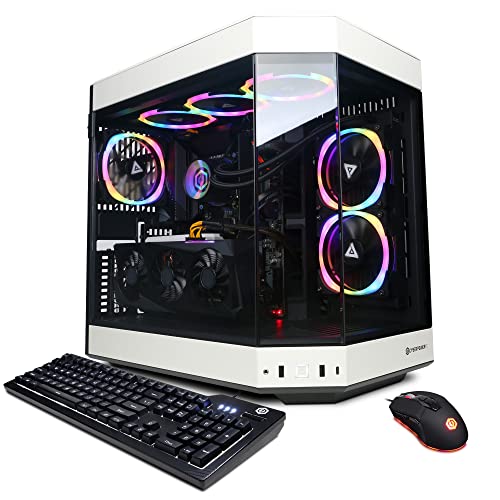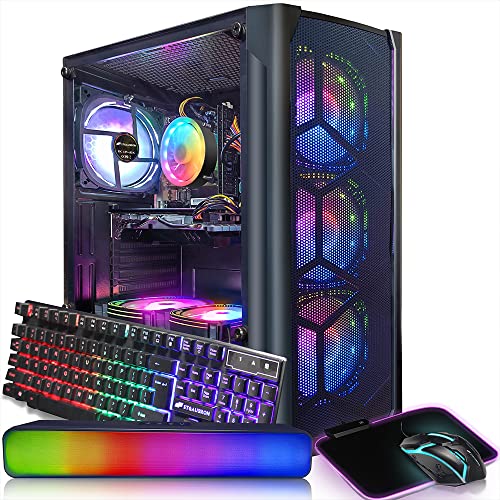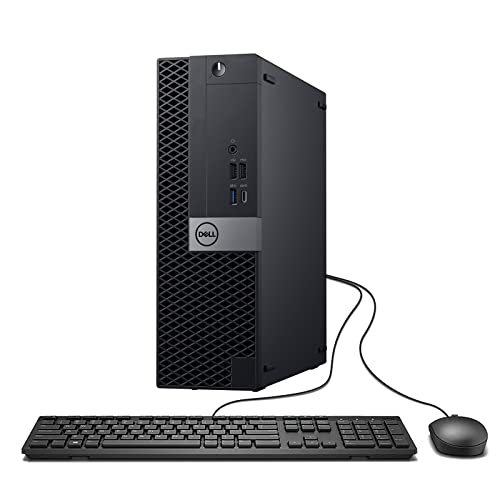### The Ultimate Guide to Building a Future-Proof PC
Building a future-proof PC is a rewarding endeavor that requires careful planning and smart decision-making. A future-proof PC isn’t just about raw power—it’s about flexibility, longevity, and ensuring your machine can keep up with evolving technology. In this expanded guide, we’ll dive deeper into the essential components, considerations, and strategies for creating a PC that will stand the test of time.
---
#### **1. The Core of Your Build: Selecting the Right CPU**
The CPU is the heart of your PC, driving its overall performance. When choosing a processor, prioritize modern architectures that support emerging technologies. Features to consider:
- **Core Count and Multithreading**: Games and software are increasingly optimized for multi-core CPUs, so opt for a processor with at least 6 cores and 12 threads for gaming. For multitasking or professional workloads like video editing, 8 or more cores may be necessary.
- **Socket Longevity**: Choose a CPU socket type that will be supported in the future. For example, AMD’s AM5 and Intel’s LGA 1700 sockets currently accommodate the latest CPUs, with room for upgrades.
- **Power Efficiency**: A CPU with good performance-per-watt reduces heat and power consumption, making your PC cooler and quieter.
High-performance CPUs like the AMD Ryzen 7000 series or Intel’s 13th Gen processors are excellent starting points for a future-proof build.
---
#### **2. Graphics: Preparing for the Future with a Cutting-Edge GPU**
The GPU is critical for gaming, 3D rendering, and other graphic-intensive tasks. To future-proof your build, invest in a powerful graphics card that can handle current and upcoming technologies, such as:
- **Ray Tracing and DLSS/FSR**: Ensure the GPU supports real-time ray tracing and upscaling technologies like NVIDIA’s DLSS or AMD’s FSR. These features enhance visuals while maintaining performance.
- **VRAM**: Opt for a GPU with at least 8GB of VRAM for gaming at 1440p or higher resolutions. For 4K gaming or demanding creative work, 12GB or more is recommended.
- **Cooling and Power Requirements**: Consider the card’s thermal design power (TDP) and ensure your PSU and case airflow can handle it.
For future-proofing, GPUs like NVIDIA’s RTX 40 series or AMD’s Radeon RX 7000 series are ideal candidates.
---
#### **3. Motherboard: The Foundation of Upgradability**
Your motherboard determines the compatibility and expandability of your build. When selecting a motherboard:
- **Chipset Capabilities**: High-end chipsets offer additional PCIe lanes, faster storage options, and support for advanced overclocking. For example, Intel Z790 or AMD X670 motherboards are excellent choices.
- **Connectivity**: Future-proof motherboards include Wi-Fi 6 or 6E, Bluetooth 5.2, and USB-C ports to accommodate modern peripherals.
- **Expansion Options**: Ensure the motherboard has enough PCIe slots for add-ons like sound cards or capture cards and multiple M.2 slots for NVMe SSDs.
---
#### **4. RAM: Striking the Balance Between Capacity and Speed**
RAM affects your PC’s ability to multitask and handle memory-intensive applications. To future-proof your system:
- **Capacity**: 16GB of RAM is sufficient for most gaming setups today, but 32GB is becoming the new standard for multitasking, streaming, and content creation.
- **Speed and Latency**: Choose RAM with higher clock speeds (e.g., DDR5-5200) and lower CAS latency for better performance.
- **Upgradability**: Leave extra RAM slots free on your motherboard to allow for easy upgrades in the future.
DDR5 memory is the latest standard, offering higher speeds and efficiency compared to DDR4. Investing in DDR5 ensures compatibility with upcoming advancements.
---
#### **5. Storage: Balancing Speed and Capacity**
Storage is more than just a place to keep your files—it impacts system performance, load times, and responsiveness. A future-proof storage strategy involves:
- **NVMe SSDs**: Opt for an NVMe SSD with high sequential read/write speeds for fast boot times and quick access to files. PCIe Gen 4 SSDs are standard now, but Gen 5 is emerging as the next leap in speed.
- **Dual-Storage Setup**: Use an SSD for your operating system and key programs, and a high-capacity HDD for media and backup storage.
- **Expandable Options**: Ensure your motherboard has multiple M.2 slots for adding more storage later.
---
#### **6. Cooling: Keeping Temperatures in Check**
Effective cooling is essential for maintaining performance and extending the lifespan of your components. Future-proof your system by:
- **Choosing a High-Performance Cooler**: An all-in-one (AIO) liquid cooler or a tower air cooler with a large heat sink is ideal for modern CPUs.
- **Optimizing Case Airflow**: Select a case with ample ventilation and space for additional fans.
- **Monitoring Temperatures**: Use software like MSI Afterburner to keep an eye on CPU and GPU temperatures during heavy loads.
---
#### **7. Power Supply: The Unsung Hero**
A reliable PSU ensures stable power delivery to all components. When selecting a PSU:
- **Wattage**: Choose a PSU with at least 30% more wattage than your current requirements to allow for future upgrades. For example, a 750W PSU is suitable for most high-end builds.
- **Efficiency**: Look for an 80 PLUS Gold or Platinum rating for higher energy efficiency and lower heat output.
- **Modularity**: Modular PSUs reduce cable clutter, improving airflow and making future upgrades easier.
---
#### **8. Building with Aesthetics and Customization in Mind**
While performance is the priority, aesthetics enhance the overall experience. To future-proof the look of your PC:
- **RGB Lighting**: Invest in customizable RGB components, such as fans, RAM, and motherboards, to personalize your setup.
- **Cable Management**: Use cable combs and sleeved cables to keep the interior tidy and visually appealing.
- **Spacious Case**: A larger case with sufficient clearance ensures compatibility with future upgrades and better airflow.
---
#### **9. Software and Maintenance**
Keeping your PC’s software up-to-date is just as important as hardware selection. Regularly update your BIOS, drivers, and operating system to ensure compatibility with the latest technologies. Additionally:
- **Monitoring Tools**: Use software to track performance, temperatures, and potential issues.
- **Cleaning**: Periodically clean the inside of your PC to prevent dust buildup, which can reduce efficiency and cause overheating.
---
#### **Conclusion: Building for the Future**
Future-proofing a PC is about making smart decisions that balance current needs with potential upgrades. By choosing components that support emerging technologies, maintaining flexibility for future expansions, and investing in high-quality hardware, you can create a system that stays relevant for years. A thoughtful, future-proof build ensures not only excellent performance today but also adaptability for the ever-changing landscape of technology.
View our related products
See more



The Ultimate Guide to Building a Future-Proof PC
Building a future-proof PC is a rewarding endeavor that requires careful planning and smart decision-making
Related Articles
Essential High-Performance PC Components You Need Now
Upgrade your setup with the must-have parts for unbeatable gaming and productivity
Top Picks for Best High-Performance PCs
Find the perfect power machine for gaming, work, or creative projects
Your Guide to the Best High-Performance PCs
Find the Right PC for Your Gaming and Creative Needs
View our related products
See more





